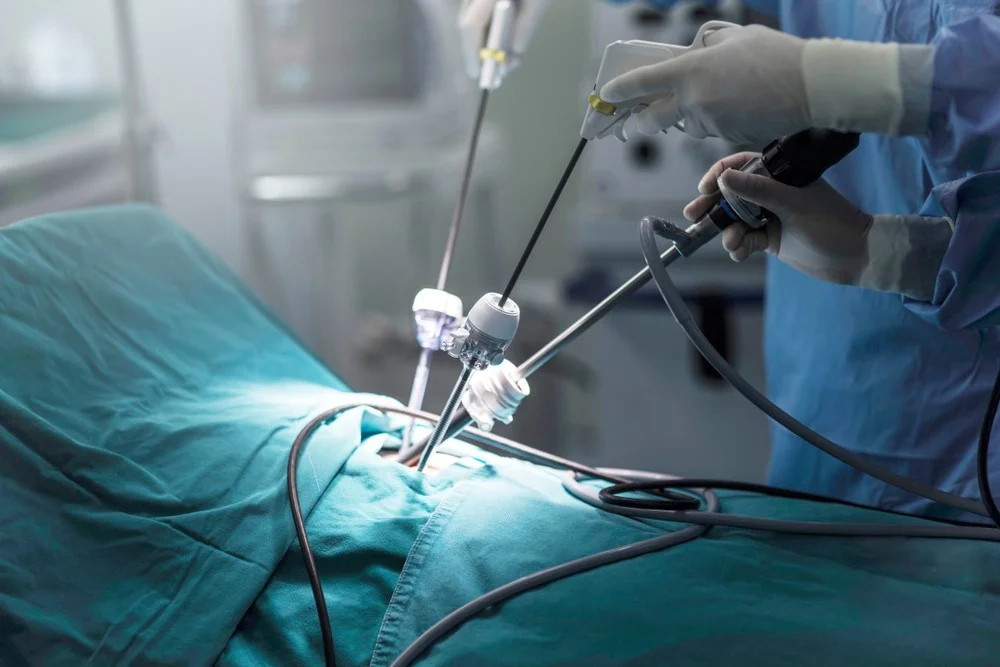What is Laparoscopic (Minimal Access) Surgery?

Symptoms and Conditions Requiring Laparoscopic Surgery
Laparoscopic surgeries are not performed for symptoms themselves but to treat conditions causing symptoms such as:
- Severe abdominal pain
- Gallstones causing pain, indigestion, or jaundice
- Hernias presenting with bulge and discomfort
- Ovarian cysts causing pelvic pain or menstrual irregularities
- Appendicitis with acute right lower abdomen pain
- Endometriosis with pelvic pain and infertility
- Fibroids causing heavy bleeding and pressure symptoms
- Obesity requiring bariatric (weight loss) surgery
Procedure or Treatment
Preparation: Patient undergoes pre-operative investigations to assess fitness for surgery.
Anaesthesia: Usually done under general anaesthesia.
Surgical Technique:
Small incisions (0.5–1 cm) are made near the treatment site.
Carbon dioxide gas is used to inflate the area for clear visibility.
A laparoscope with a camera is inserted to visualise internal organs on a monitor.
Specialised instruments are inserted through other small incisions to perform the surgery.
Completion: Instruments are removed, gas is released, and incisions are closed with minimal sutures or staples.
Recovery: Most patients resume routine activities within a few days, with complete recovery within 1–2 weeks depending on the procedure.
Prevention
While laparoscopic surgery is a treatment, not prevention, maintaining a healthy lifestyle can reduce the risk of conditions requiring surgery:
- Eat a balanced diet to prevent gallstones and obesity.
- Exercise regularly to avoid hernias and weight-related issues.
- Undergo regular health check-ups for early detection of conditions like fibroids, cysts, or endometriosis.
Benefits of Laparoscopic (Minimal Access) Surgery
- Smaller incisions leading to less pain and scarring
- Faster recovery and shorter hospital stay
- Reduced blood loss during surgery
- Lower risk of infections and complications
- Early return to normal activities and work
- Better cosmetic outcome compared to open surgery
Types of Laparoscopic Surgeries
Laparoscopic Cholecystectomy – Removal of gallbladder for gallstones.
Laparoscopic Appendectomy – Removal of appendix in appendicitis.
Laparoscopic Hernia Repair – Repair of inguinal, umbilical, or incisional hernias.
Laparoscopic Hysterectomy – Removal of uterus for fibroids or other gynaecological issues.
Laparoscopic Myomectomy – Removal of uterine fibroids preserving uterus.
Laparoscopic Ovarian Cystectomy – Removal of ovarian cysts.
Laparoscopic Endometriosis Surgery – Treatment of endometriosis lesions.
Laparoscopic Bariatric Surgery – Weight loss surgeries like sleeve gastrectomy or gastric bypass.
Diagnostic Laparoscopy – To identify the cause of unexplained abdominal or pelvic pain.
